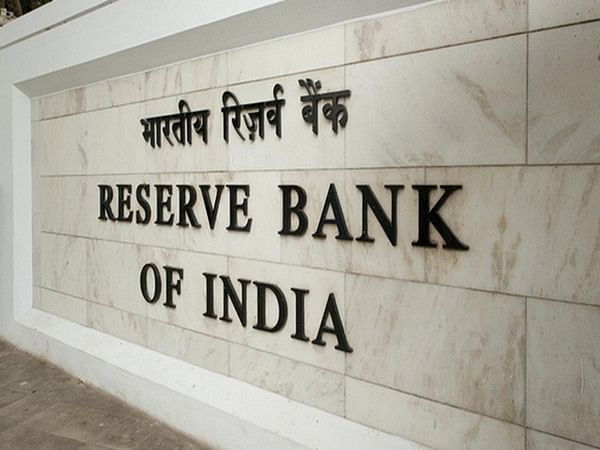It seems that India’s central bank is no fan of “buy now, pay later.” But then, the regulator’s irritation with this newish fad in consumer finance is wholly understandable.
“Get Credit in 90 seconds. Shop at Millions of Merchants. Pay Later,” says the website of LazyPay, which claims to have 60 million eligible users in India. Rival Uni, which is backed by Lightspeed Venture Partners and raised $70 million in financing last December, tells customers to “Pay 1/3rd. Anywhere” using its cards. EarlySalary claims more than 10 million downloads of its app and promises up to 500,000 rupees ($6,400) in instant cash to “help you sail through your difficult moments.”
It was all getting a bit too much. So last week, the Reserve Bank of India brought out its regulatory axe and hacked away at a popular path to small-ticket fintech loans. According to new RBI guidelines, nonbanks can no longer load prepaid instruments — digital wallets, or stored-value cards — using credit lines. The only valid options for a buyer are to prefill their wallet with cash, or to debit their bank or credit-card accounts.
The RBI doesn’t have a problem with 90-second credit. The regulator was even willing to let nonbank finance companies, or NBFCs, retain their existing lead over banks in the origination of short-term consumer credit, especially for really small-ticket transactions. After all, shadow banking in India is no longer the shrouded creature it was a few years ago; NBFCs now face fairly stringent capital requirements, and have to make detailed disclosures of the risks on their books. However, the opportunism coded into their DNA makes them inherently risk-seeking; fintech players can still seduce them into what an RBI working group described last year as the “Rent-an-NBFC model” of digital lending.
That’s when the process stops being simple matchmaking between customer and lender. Instead, the fintech in the middle starts offering a first-loss default guarantee up to a certain percentage of the loans underwritten by a nonbank financier. This introduces credit risk on the balance sheet of digital intermediaries who don’t have to maintain any regulatory capital.
Considering how hard it is for the RBI to smash every such private arrangement between fintech and NBFCs, the central bank has taken the controversial decision to go after the latter to rein in buy now, pay later. The RBI wants every small-ticket loan to be a marriage officially solemnized in the church of banking.
India isn’t the only country alarmed by the proliferation of buy now, pay later. The UK government is also tightening rules on BNPL loans to ensure that lenders carry out proper affordability checks and don’t entrap unsuitable borrowers with unfair, over-the-top advertising. As inflation cuts into the purchasing power of households, the temptation for them to use interest-free loans is high. But so is the risk of getting sucked into a vicious cycle of overspending. Even in the UK, there’s a strong undercurrent of rivalry between BNPL specialists and banks. After a Barclays Plc report called for stronger regulation of the sector, Alex Marsh, the head of Klarna’s UK business, said it was an attempt by the London-headquartered bank to push its own “high-cost” loan installment offering.
In India, the typical credit period for zero-interest loans is between 20 to 40 days, though durables purchased on installment plans come with longer repayment schedules and higher credit limits. BNPL is still nascent, but expanding at a scorching pace thanks to the rising popularity of both e-commerce and digital payments. In January, Mumbai-based HDFC Securities predicted that “pay later” merchandise value would grow 74% every year to make it a $56 billion market by March 2026. The problem, however, lies in the elusive road to profitability. “The BNPL model has a significantly high dependence on late fees,” the brokerage noted in its report, “which also mirrors itself in elevated credit costs.”
Fintech players and shadow banks will undoubtedly lobby against handing over an entire industry on a platter to banks. (On June 21, a day after the RBI’s new guidelines, shares of SBI Cards & Payment Services Ltd., the only publicly traded credit-card business in India, jumped nearly 7%.) Besides, BNPL is an innovation that now has large tech players like Apple Inc. and heavyweight banks like JPMorgan Chase & Co. coming to disrupt startups like Klarna, Afterpay Ltd. and Affirm Holdings. India can’t be immune to the mainstreaming of pay-later innovations.
Perhaps a compromise solution will be found for sharing the spoils among banks, nonbank lenders and fintech. One thing is certain, though: BNPL still has to prove that it is an economically sound and socially beneficial product. If regulatory arbitrage — like not having to report all delinquencies to the credit bureaus — is how the industry will attract capital, then the RBI is right to want to clip its wings before it’s too late. – Bloomberg
Also read: Sealing wax in Aadhaar foundation won’t work. Cracks need to be ‘acknowledged & fixed’



